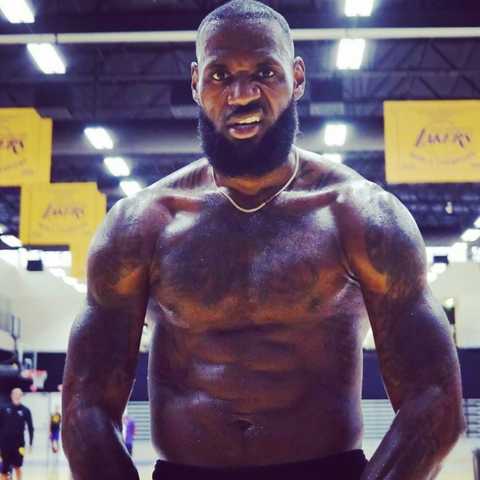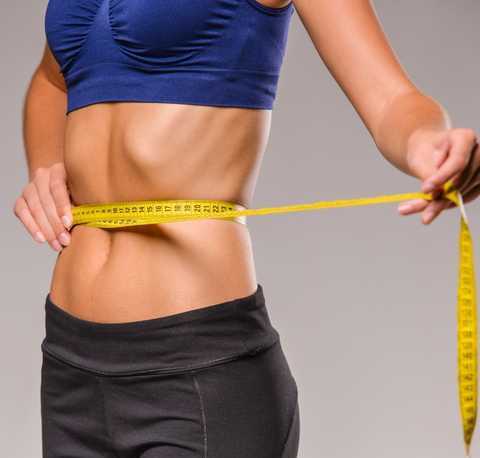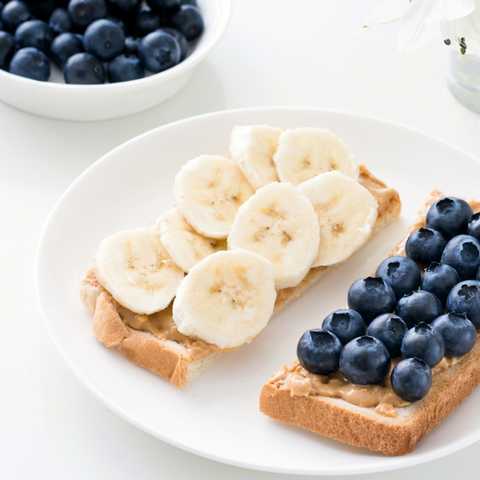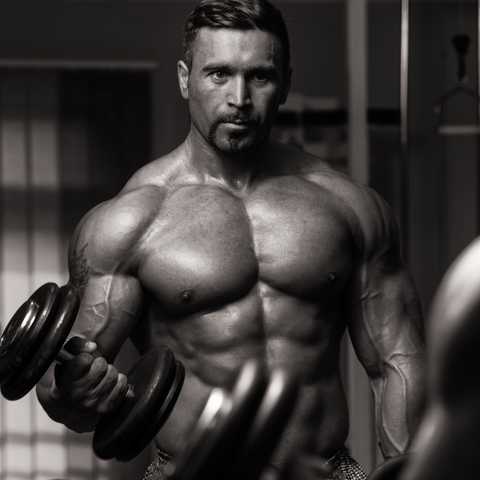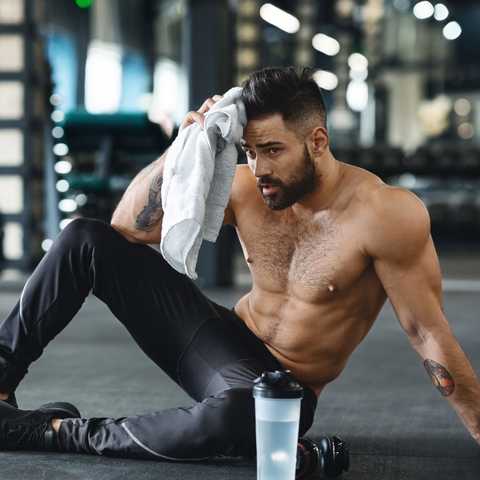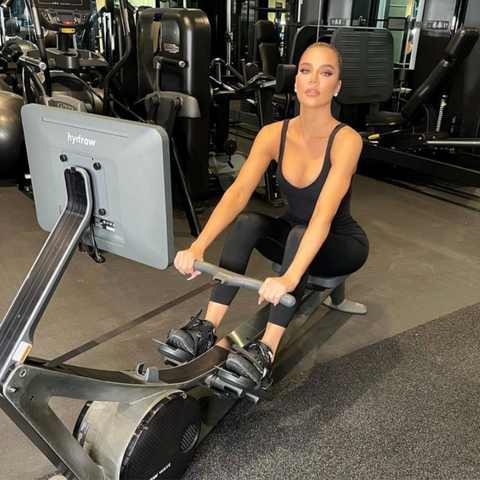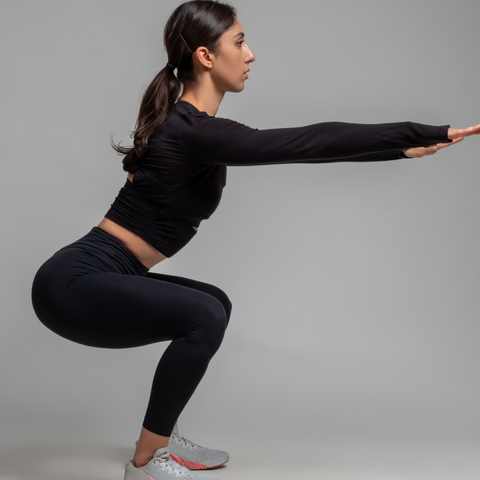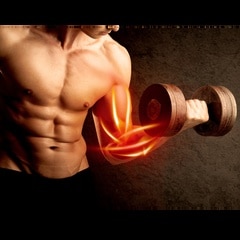That’s because the bicep curl is a great isolation exercise to build your upper arms, and as there is an endless assortment of curl variations to choose from, you’ve got tons of great options.
One such option that stands out among the many other curl variations is the cable curl. In fact, we regularly rotate this biceps exercise into our own training routine and believe that if you have access to a gym, you should too.
This article is going to go over everything you need to know to perfect the cable curl. Get ready for an incredible biceps pump!
Table of Contents:
- What Is The Cable Curl?
- Proper Cable Curl Form
- Muscles Worked In The Cable Curl
- Benefits Of The Cable Machine
- Common Biceps Cable Curl Mistakes To Avoid
- Biceps Cable Curl Variations
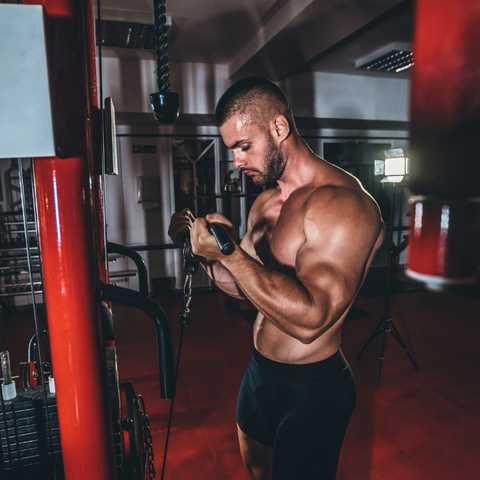
What Is The Cable Biceps Curl?
The biceps curl requires the same movements as barbell curls and dumbbell curls, but instead of using free weights, you perform them on a cable machine. Due to the versatility of the cable machine, you can complete the cable curl with a straight cable curl bar attachment or EZ-curl bar.
Let’s take a quick look at each attachment.
What is The Difference Between The Straight Bar & EZ-Curl Bar?
The straight bar attachment is the traditional attachment used in a cable bicep curl, as it is the simplest bar to use and is effective at training your arm flexors. However, it does have some issues. The primary problem with the straight bar is that it puts excessive torque on the wrist. As the force is placed directly on the wrist joint, it’s easy for the wrist to hyper-extend.
Combating this means your forearm muscles must excessively fire to maintain a straight wrist. While training your forearm muscles isn’t the worst thing that could happen, training only the forearms is not the objective. It can take away from training the actual biceps muscles.
To solve this, some trainees prefer using the EZ-curl bar. This curl bar allows you to use an angled grip with your hands rotated slightly outward. The resistance is now placed on the wrist joint at an angle, allowing for a stronger wrist. In turn, less effort is placed on keeping the wrist straight, and more force is placed directly on the biceps muscles.
Check out our article on the EZ-curl bar to learn more about its benefits and how to best utilize it.
Proper Form For The Cable Curl
Now that you know what cable curls for biceps are, along with the different attachment options, we’ll go over step-by-step directions to help you make the most of this exercise.
How to do Cable Curls:
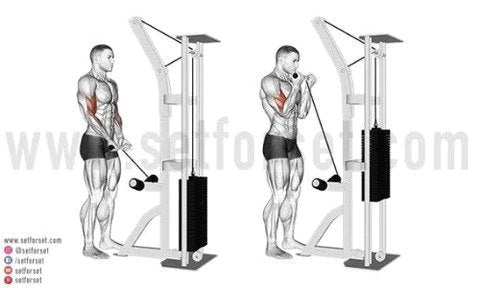
- To perform cable bicep curls, set up a cable pulley in a low position for the starting position. Attach either your straight bar or EZ-curl bar. Select the weight you want to use by adjusting the pin on the cable rack.
- Bend down and grab the handle attachment evenly using a double underhand grip. Stand up with the bar and move a foot or two back from the pulley. Keep your knees slightly bent, and your elbows tucked to your sides. They will stay here the entire movement.
- Slowly raise the weight by flexing your arms and pulling the bar up. In the top-contracted position, your lower arms should come up to your upper arms and almost touch.
- During the movement, keep your elbows tucked, and your wrist straight.
- Squeeze at the top when fully contracted. Slowly lower the bar in a controlled motion all the way to the bottom.
Muscles Worked in the Cable Curl
The biceps is hard at work during the cable curl, but it isn’t the only muscle activated. Here’s a look at the three muscles working during the cable curl exercise.
The Biceps:
The biceps brachii is a two-headed muscle that sits on the anterior of the upper arms and runs all the way from the shoulder joint down to the elbow joint. And because the biceps crosses two joints, it’s actually a biarticular muscle.
The two muscle heads are:
- Short head: The biceps short head runs across the inside of the arms, which is the front side of the arm, during a front double biceps pose. It’s responsible for the biceps peak.
- Long head: The long head crosses the shoulder joint and runs down the outside of the arms until it crosses the elbow joint. It’s responsible for elbow flexion as well as shoulder extension.
These muscles work together as the forearms’ primary pronators (turning the palms to face up).
Interestingly, while the biceps are typically associated with flexing the arms, they are actually secondary arm flexors. When doing the cable curl, the biceps muscles are only worked when the hands are facing up. If the arm is supinated, the biceps are used significantly less. It’s also important to maintain a strong mind muscle connection with the biceps throughout the exercise.
The Brachialis:
A common misconception is that cable curls primarily target the biceps. But, they also significantly train a large muscle called the brachialis, which sits under the biceps and is the arm’s primary flexor¹. Unlike the biceps, the brachialis is a muscle worked in every type of arm flexion.
Even though you don’t necessarily see the brachialis, it still increases the size of your arm as it “pushes” the biceps up. Further, it most definitely improves the muscular strength of the biceps, which will increase the load it can lift and, ultimately, its size.
The Brachioradialis:
The last muscle that’s worked during the cable curl is the brachioradialis muscle. This is smaller than the other muscles worked and is one of the primary muscles of the forearms.
It’s involved in arm flexion and will get hit during any movement requiring biceps flexion.
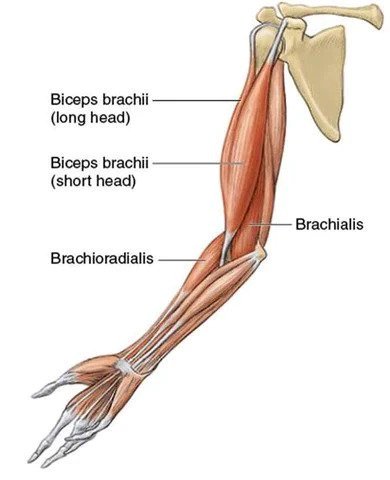
Benefits Of Using A Cable Machine For Curls
Barbell aside, we love the cable machine. Here are some of the benefits of performing curls on the cable machine.
1. It Makes Special Sets Easy:
Looking to incorporate curls into a special set? Cable machines make it easy to perform circuit sets, super sets, and drop sets.
Cable machines make it easy to swap both the weights selected and the attachments used. You can then easily drop the weight you’re using, swap exercises, or even do both. Sure, you can do these special sets with free weights, but it requires grabbing multiple pieces of equipment.
2. You Can Use Multiple Attachments For Different Exercises:
The different cable machine’s attachments provide even more variety in your routine. You can even perform different variations of biceps curls simply by swapping out attachments.
While technically it’s “one” machine, you can perform dozens and dozens of exercises, probably more than a hundred.
3. You’re Able To Control The Angle Of Resistance:
One problem with performing biceps curls is that the weight always goes straight down. This creates a wild difference in tension, depending on whatever part of the curl you’re on.
For example, when your arm is bent at 90 degrees, the torque is significantly higher than when you’re at the very top or bottom of the exercise.
While this doesn’t completely go away with the cable, you’re able to mitigate its effect.
Common Mistakes And Special Notes
Even though the cable curl is a relatively simple arm exercise, there is still room for error. Here are some things to watch out for that will help you perfect your cable curl form.
1. Lifting Too Heavy:
Similar to many isolation exercises, the biceps curl is not the time to lift ultra-heavy. Save the heavy weights for your compound exercises, and opt to lift lighter when performing the curl.
Keep in mind that lifting heavy is not the point of the cable curl or any curl, for that matter. Not only can you hurt yourself, but it can also ruin your form. Ironically, this mitigates the usefulness of the cable curl and can actually decrease the effect when compared with a lighter weight.
Drop the weight and focus on knocking out more reps instead.
2. Flaring Your Elbows:
We’ve now mentioned the importance of keeping your elbows tucked multiple times. That’s because flaring your elbows is a common mistake many trainees make. Flaring your elbows predominantly occurs when the biceps aren’t strong enough to lift the weight naturally.
By flaring the elbows, the arm is placed in a better mechanical advantage, but this actually mitigates the effectiveness of training the muscle. Again, to build muscle most effectively, don’t lift too heavy and keep your elbows tucked!
3. Moving Your Body:
This is yet another mistake that comes from lifting too heavy. Now to be clear, we don’t mind a minimal amount of upper body movement, especially if you’re getting in 8+ reps and using good form everywhere else.
In fact, “cheat” cable curls or “heavy negatives” are actually the name for a specific type of cable curl that purposely uses heavy weights, which we’ll discuss below.
But for your regular biceps curl, you want to really isolate the biceps muscles and let this muscle do most of the work. This means only using a small amount of body movement.
4 Variations Of The Biceps Cable Curl
If you want really strong biceps, it’s smart to vary which curl variations you use in your arm workout. Fortunately, there are plenty to choose from.
Here are four of our favorites.
1. Reverse Cable Curl:
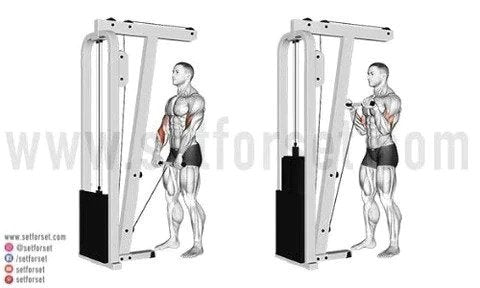
The reverse cable curl is one of our favorite alternatives to the cable curl. As mentioned above, to some extent, cable curls target the biceps, brachioradialis, and brachialis.
The reverse cable curl is performed with palms facing downward, or an overhand grip, which severely mitigates the input from the biceps brachii. The brachialis then essentially becomes the only muscle responsible for arm flexion during this exercise. Be sure to use a shoulder-width grip.
Everyone should at least have one reverse curl variation in their workout program. We like using the EZ-curl bar for these.
2. Cable Hammer Curls:
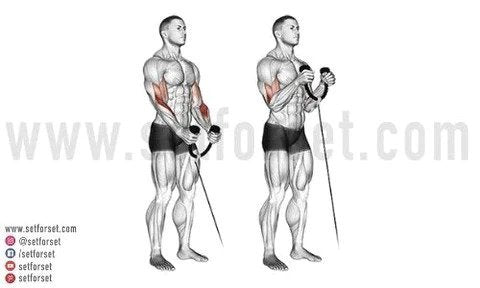
Cable hammer curls are another standing bicep cable curls variation that should be in your biceps training program. It’s a biceps curl that’s performed with a neutral grip using the rope attachment. When you grab the rope attachment, be sure to have your thumbs near the top of the rope. From there, everything is basically the same in terms of form.
As the hands are in a neutral grip during the cable hammer curl, this exercise trains the brachialis to a greater extent, as well as your brachioradialis. In other words, it compliments the reverse cable curl.
3. Heavy Negatives:
Heavy negatives emphasize the eccentric contraction, which is great for building muscle.
In fact, studies have shown that the eccentric portion of the movement is responsible for a greater percentage of muscle damage and muscle growth². Heavy negatives use this to the biceps’ advantage, allowing a greater load to be used while concentrating on the eccentric portion of the lift.
To perform these, choose a heavy weight that’s equal to maybe 85%-90% of what your 1RM would be. Use a little body movement to get the weight up and slowly lower it in a controlled motion under constant tension.
Negative Biceps Curl Demo on YouTube
4. Bayesian Curl:
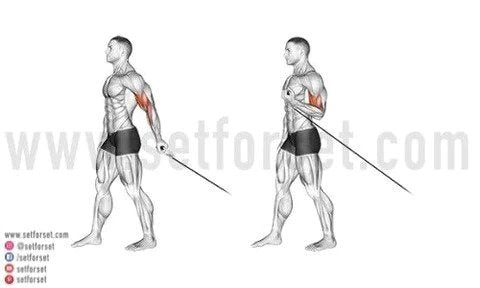
The Bayesian curl is unique to the cable machine due to the force of tension. It takes advantage of the biceps anatomy and ensures that constant tension is placed on the muscle during the entire movement, even when fully extended. This is due to the biceps role in shoulder extension, in combination with the weight attempting to pull the arm backward.
To perform this version of a single arm cable curl, use a single arm cable attachment and turn away from the machine. Hold the attachment with one hand and stand so that the cable pulls the arm back slightly. Now, as you go to curl the weight up, lean forward slightly and pull your elbow forward. This exercise is great for identifying any muscle imbalances that may exist.
Summary of The Biceps Cable Curl
If the only type of biceps curls you are doing is a barbell curl, it’s time to switch it up. The cable curls work all of your arm-pulling muscles while simultaneously improving your posture.
Once you see how easy it is to swap exercises and weights, we’re certain the cable curl, and cable machines in general, will find a spot in your workout routine.
Ready to burn out your biceps on the cable machine? Check out our Bicep Cable Workout!

